CUMBRES & TOLTEC TRAIN (Day 2 - part 5)
We left Cumbres and started downhill. This was the steepest part of the track with a 4% grade (meaning for every 100 feet forward, we descended 4 feet down). This is actually a rougher ride than going up since the train cars have a tendency to run into each other.


The Continental Divide Trail (CDT) actually passes through here.


The trail covers 3,100 miles and runs fro Canada to Mexico, following the Continental Divide along the Rocky Mountains. It takes about 6 months to complete.

This trestle used to cross over Highway 17 until the late 1960's when the road was moved.

Views of Chama Valley with Highway 17 (which we'd soon be down there crossing over) running down its center

The track at Windy Point is cut right into the cliff face.

This section of track at one point was covered with eight snow sheds... all of which burned down due to the train.

One of the snowsheds at Windy Point, before it was destroyed by fire in 1920
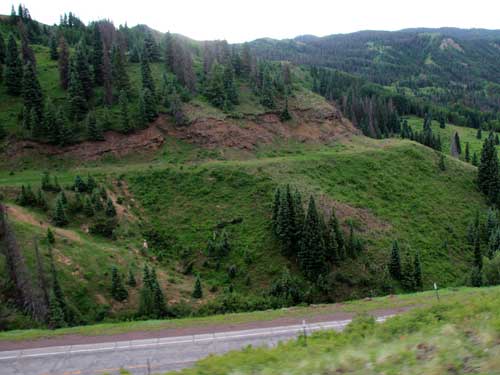
Carved into the hillside (above the new road) is the remains of the old road...
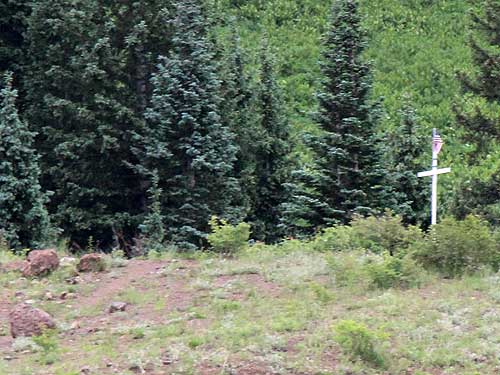
... as well as a cross that marks the location where one A. Martinez didn't make the tight turn in 1966.

Blowing steam
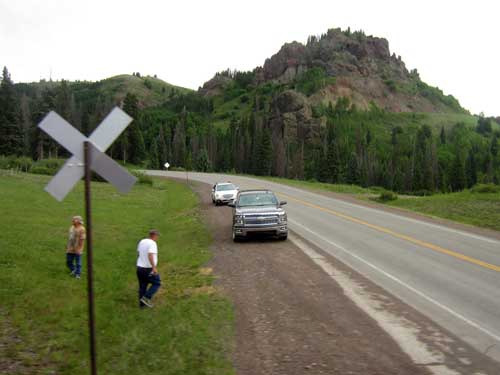
Crossing Highway 17 with Windy Point in the background
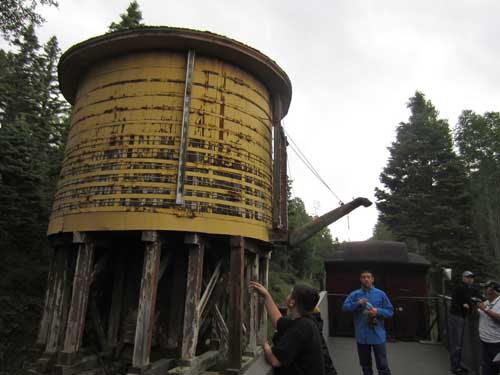
The Cresco water tank was built in 1893.

In the 1970's (and again in 2013), this was the site of a massive tent caterpillar invasion which had come to feed on the aspens. Along with stripping the trees, the larvae also ended up completely covering the train tracks, making it sometimes too slippery for the train to make it uphill. Originally, two crewmen with brooms sat at the front of the train trying to sweep them off the tracks, but quickly the men were replaced with water jets that blasted the tracks clean.


Blue smoke pours from the hard-working brakes as the train finally finishes the steep grades.

The original wooden trestle was built hastily across the East Fork of Wolf Creek. It was upgraded to iron in 1883. It gets its name, Lobato Trestle, from the Spanish word lobato, meaning young wolf. A fire damaged the trestle in 2010, causing it to be out of function for a year. During that time, train tours could only go as far as this point from either side (Antonito or Chama).

Looking down at Wolf Creek, 100 feet below

The final straight stretch to Chama

This prop was built for the opening sequence of Indiana Jones and the Last Crusade, filmed in 1989. Many many movies have been filmed along this train line.

A still from the movie of the prop in action

A Mule Deer casually watches us as we pass.

This steel bridge across the Rio Chama was built in the 1920's. We were now surrounded by lush cottonwoods and willows.
We pulled slowly into Chama. Originally settled in 1865, this town thrived when the railroad arrived in 1880.


The water tank, built in 1897, has a double spout.

A rotary snow plow has a large circular set of blades at its front end that rotate to cut through the snow on the track ahead of it.

A rotay works to clear snow at Windy Point in 1908.

Clearing the track near Cresco in 1990

This coal tipple was built in 1924, replacing the old coal chute of 1902. One can still see hints of its original red color.

Railroad workers greet us.

The original depot, built in 1882, burned down in the 1899. It was promptly rebuilt. Fire was common for early-day western towns. Chama burned three times from 1899 to 1925.


Departing the train
Unfortunately we had no time to explore the train yard. We had to immediately hop on a bus that would be taking us back to Antonito via Highway 17. The highway wove in and out with the train tracks as far as Los Pinos, then we parted ways.




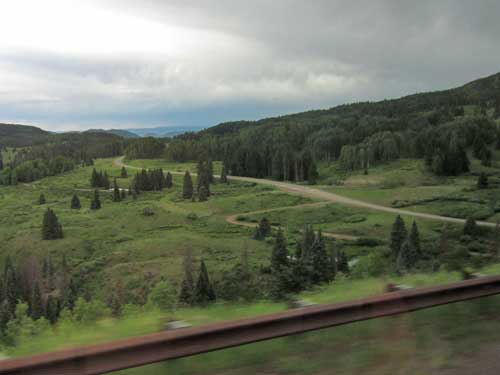
Heading up Windy Point

The crossing at Cumbres Pass

Los Pinos, with the water tank in the corner


Once back in our own vehicle, we headed south on Highway 285.

Leaving the Antonito station

New Mexico became our 47th state in 1912.


Just outside of Santa Fe, we got hit by a typical southwestern storm... immense amounts of rain that instantly flooded the streets and then it was over just as suddenly in a few minutes.

Instant flooding

The storm breaks...

... and is almost instantly gone.

Casino gambling is illegal in New Mexico... unless it is on tribal land. Native American lands are sovereign, meaning they make can their own rules.
Gambling in New Mexico was first legalized in the form of horse racing, which began shortly after the end of World War II. It was hugely successful for many decades until it also became legal in Texas, which proved to be too much competition. But by then, tribal casinos had come onto the scene. Today, over a dozen different pueblos and tribes (including the Navajo and Apache) all own casinos throughout much of the state.
We arrived at our hotel shortly before 8 pm. We all took nice, long showers in an attempt to wash off all the train soot that covered us from head to toe!

Our lovely accommodations for the next two nights
return • continue

